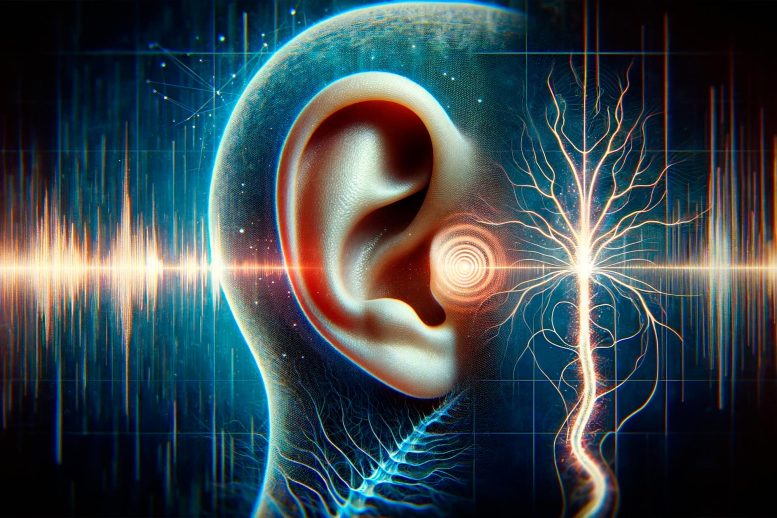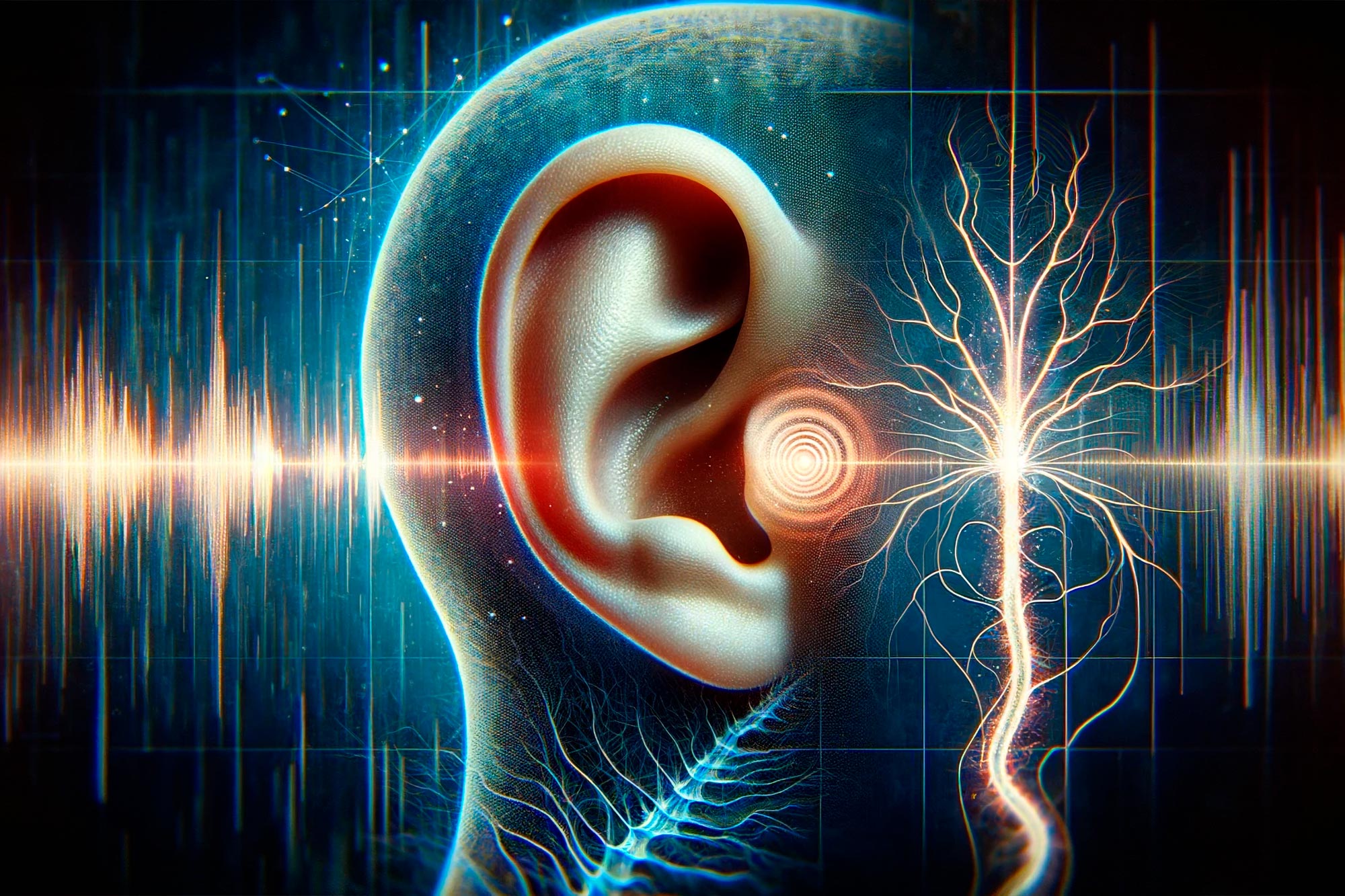
Mass Eye and Ear researchers have linked tinnitus, which affects over 10% of adults worldwide, to undetectable auditory nerve damage. This study opens new possibilities for the treatment of tinnitus by focusing on regenerating the auditory nerve.
A groundbreaking discovery by researchers at Mass Eye and Ear has connected tinnitus to undetected auditory nerve damage, challenging previously held beliefs and opening the door to new treatment paths through auditory nerve regeneration.
Mass Eye and Ear investigators have made a groundbreaking revelation that individuals reporting tinnitus, which is experienced by more than one out of ten adults globally, are suffering from auditory nerve loss that is not detected by standard hearing tests. This research is part of a P50 grant from the National Institutes of Health (NIH) awarded to Mass Eye and Ear researchers at the Eaton-Peabody Laboratories (EPL). Their work focuses on cochlear synaptopathy, also known as “hidden hearing loss.” The study has been published in the journal Scientific Reports.
Impact of Tinnitus on Quality of Life
“Beyond the nuisance of having persistent ringing or other sounds in the ears, tinnitus symptoms are debilitating in many patients, causing sleep deprivation, social isolation, anxiety and depression, adversely affecting work performance, and reducing significantly their quality of life,” said senior author Stéphane F. Maison, PhD, CCC-A, a principal investigator at Mass Eye and Ear, a member of Mass General Brigham, and clinical director of the Mass Eye and Ear Tinnitus Clinic. “We won’t be able to cure tinnitus until we fully understand the mechanisms underlying its genesis. This work is a first step toward our ultimate goal of silencing tinnitus.”
Rethinking Tinnitus and Hearing Loss

Stéphane F. Maison, PhD, CCC-A, an investigator at Mass Eye and Ear’s Eaton-Peabody Laboratories, and clinical director of the Tinnitus Center at Mass Eye and Ear. Credit: Mass Eye and Ear
Many individuals with hearing loss report a buzzing, humming, ringing, or even roaring sound in their ears. It’s been a longstanding idea that these symptoms, known as tinnitus, arise as a result of a maladaptive plasticity of the brain. In other words, the brain tries to compensate for the loss of hearing by increasing its activity, resulting in the perception of a phantom sound, tinnitus. Until recently though, this idea was disputed as some tinnitus sufferers have normal hearing tests.
However, the discovery of cochlear synaptopathy back in 2009 by Mass Eye and Ear investigators brought back to life this hypothesis as it was evidenced that patients with a normal hearing test can have a significant loss to the auditory nerve. In view of this paradigm shift in the way researchers and clinicians think about hearing loss, Maison and his team sought to determine if such hidden damage could be associated with the tinnitus symptoms experienced by a cohort of normal hearing participants. By measuring the response of their auditory nerve and brainstem, the researchers found that chronic tinnitus was not only associated with a loss of auditory nerve but that participants showed hyperactivity in the brainstem.
Towards a Potential Cure for Tinnitus
“Our work reconciles the idea that tinnitus may be triggered by a loss of auditory nerve, including in people with normal hearing,” said Maison.
In terms of future directions, the investigators aim to capitalize on recent work geared toward the regeneration of auditory nerve via the use of drugs called neurotrophins.
“The idea that one day, researchers might be able to bring back the missing sound to the brain and, perhaps, reduce its hyperactivity in conjunction with retraining, definitely brings the hope of a cure closer to reality,” Maison added.
Reference: “Evidence of cochlear neural degeneration in normal-hearing subjects with tinnitus” by Vasilkov et al., 30 November 2023, Scientific Reports.
DOI: 10.1038/s41598-023-46741-5
Funding: This work was supported by a grant from the NIDCD (P50 DC015857) and the Lauer Tinnitus Research Center at the Mass Eye and Ear.


